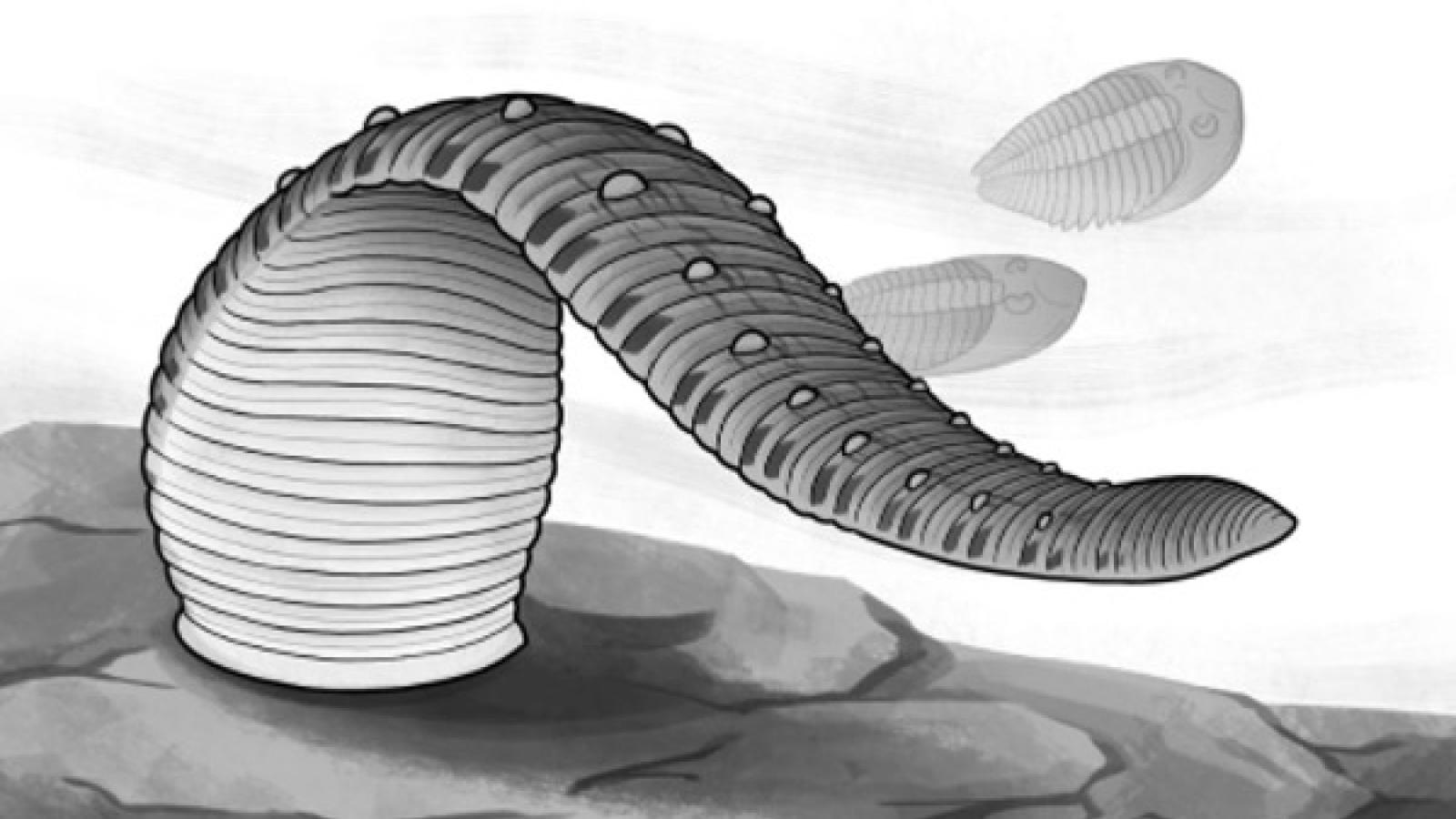History-Making Worm

Worms play important roles in both terrestrial and aquatic ecosystems but rarely make the news. This is especially true for fossil worms. However, earlier this month, a new fossil worm described by Ohio State scientists, part of a multi-institutional team, did make the news internationally. The worm, named Macromyzon siluricus, has been determined to be the earliest-known example of a leech, and it pushes the recognized evolutionary history of this group back more than 200 million years to the Silurian Period, about 437 million years ago. Macromyzon probably fed differently from many modern leeches: it is inferred to have fed on the haemolymph of arthropods such as trilobites, rather than the blood of vertebrates (as shown in the reconstruction by E.K. Chan). The article in PeerJ, authored by Danielle de Carle (University of Toronto), Rafael Iwama (Univerity of São Paulo), Andrew Wendruff and Loren Babcock (The Ohio State University, Orton Geological Museum), and Karma Nanglu (University of California, Riverside) can be accessed here.

